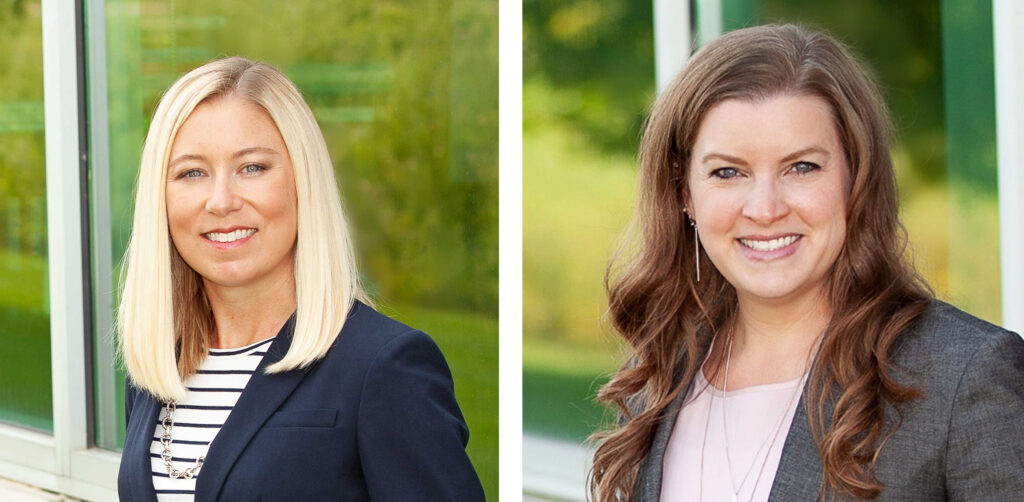By Ashlee Vieregger, senior lead adviser, Foster Group and Brittany Heard, lead adviser, Foster Group
This is the final part of a four-part guest commentary series from Foster Group that aims to provide insight into navigating your financial health, from early career to retirement.

Planning for retirement is the journey of a lifetime – a marathon, not a sprint. But what happens after you cross the finish line? You may feel proud, relieved, excited. You may wonder, “What’s next? How do I navigate this new chapter?” Read on for more on the art and science of navigating life after the working world.
Retire “to” something, not just “from” something.
Retirement is so much more than simply not going to work anymore. We encourage our client families to consider what they want to retire “to.” Whether it is hobbies, volunteering, travel or spending more time with family, most happy retirees have a project or activity they pick up once they leave the working world.
No more paycheck. Now what?
Before you do much else in retirement, take time to figure out how to pay yourself and re-create your paycheck to fund your lifestyle needs. Thinking about this ahead of time will help bring peace of mind. You may have a few income streams to tap, including Social Security benefits, retirement account withdrawals, business income, rental real estate income, farm cash rent income and employer pension benefits.
One key retirement income decision is when to start collecting Social Security. Payments can begin as soon as age 62, but there is a reduced benefit for collecting early. Workers reach “full retirement age” between ages 66-67, depending on when you were born. If you delay collection past full retirement age, your benefit will increase for each year you wait, and the latest you can begin collecting is age 70.
Most likely, you’ll need withdrawals from employer retirement plans and IRAs to supplement your Social Security benefits. Sketching out a plan for retirement account distributions is a must since it usually involves making three kinds of decisions in one: income decisions (how much to withdraw), income tax decisions (what tax consequence accompanies a withdrawal), and investment decisions (which assets to sell). You’ll also be required to start taking withdrawals from pretax retirement plans like 401(k)s, 403(b)s and traditional IRAs between ages 72 and 75, depending on when you were born. Working with a financial adviser and tax professional can help you gain clarity with managing distributions.
Another significant transition to navigate is Medicare enrollment when your eligibility begins at age 65. Information, misinformation and advertising disguised as education abound, making the process confusing for many retirees. As advisers, we help our clients through this transition and demystify Medicare enrollment. The Senior Health Insurance Information Program is also a helpful resource and objective source for information.
A conservative approach to investing
As you shift from using earned income to using savings, investments and retirement plans to fund your retirement, how your portfolio is invested may also need to shift. It’s common for retirees’ asset allocations to move in a more conservative direction to avoid taking undue risks while taking withdrawals.
When we engage with clients, we help select an appropriate asset allocation for their portfolio. Every client is unique, and we incorporate multiple factors into the analysis, including age, cash needs, investment time horizon, and appetite for risk.
Periodic down-market environments are a reality of life as an investor, and we work hard to prepare our clients ahead of time to build the confidence they need to withstand periods of choppy waters and stormy seas in the market ocean.
Protect yourself and your family
Throughout your life, you probably relied on insurance to protect yourself and your family from economic setbacks. However, the roles of life insurance and disability insurance, in particular, shift as you build wealth. It’s critical to review your insurance every few years to make sure it is right-sized for you. Early on, there are large gaps to fill in the event of a premature passing, and as your wealth grows, those gaps narrow.
Long-term care insurance also is of interest to many of our clients. The thought of depleting your nest egg to cover the cost of assisted living, nursing care or memory care is frightening. It’s something to consider, especially in your 50s and above. Because not all policies are created equal, we recommend working with an experienced and impartial insurance adviser.
Leaving your legacy
There can be a lot of hesitation to discuss money and wealth with family, from fear of losing family privacy to having a negative effect on your children’s or grandchildren’s work ethic. The families we work with that have been the most successful have been intentional with their communication and don’t let silence speak volumes. While it can take time to build trust, regular communication helps prevent friction and conflict later on.
Give your financial plan a yearly physical
Depending on the complexity of your financial situation, we recommend taking a look at your financial plan one or twice a year. Estate planning documents should be reviewed every three to five years and when a major life change occurs or when new tax laws come into play.
Here’s to bright sun, calm waters and smooth sailing in retirement!
PLEASE SEE IMPORTANT DISCLOSURE INFORMATION at www.fostergrp.com/disclosures. A copy of our written disclosure Brochure as set forth on Part 2A of Form ADV is available at www.adviserinfo.sec.gov.


